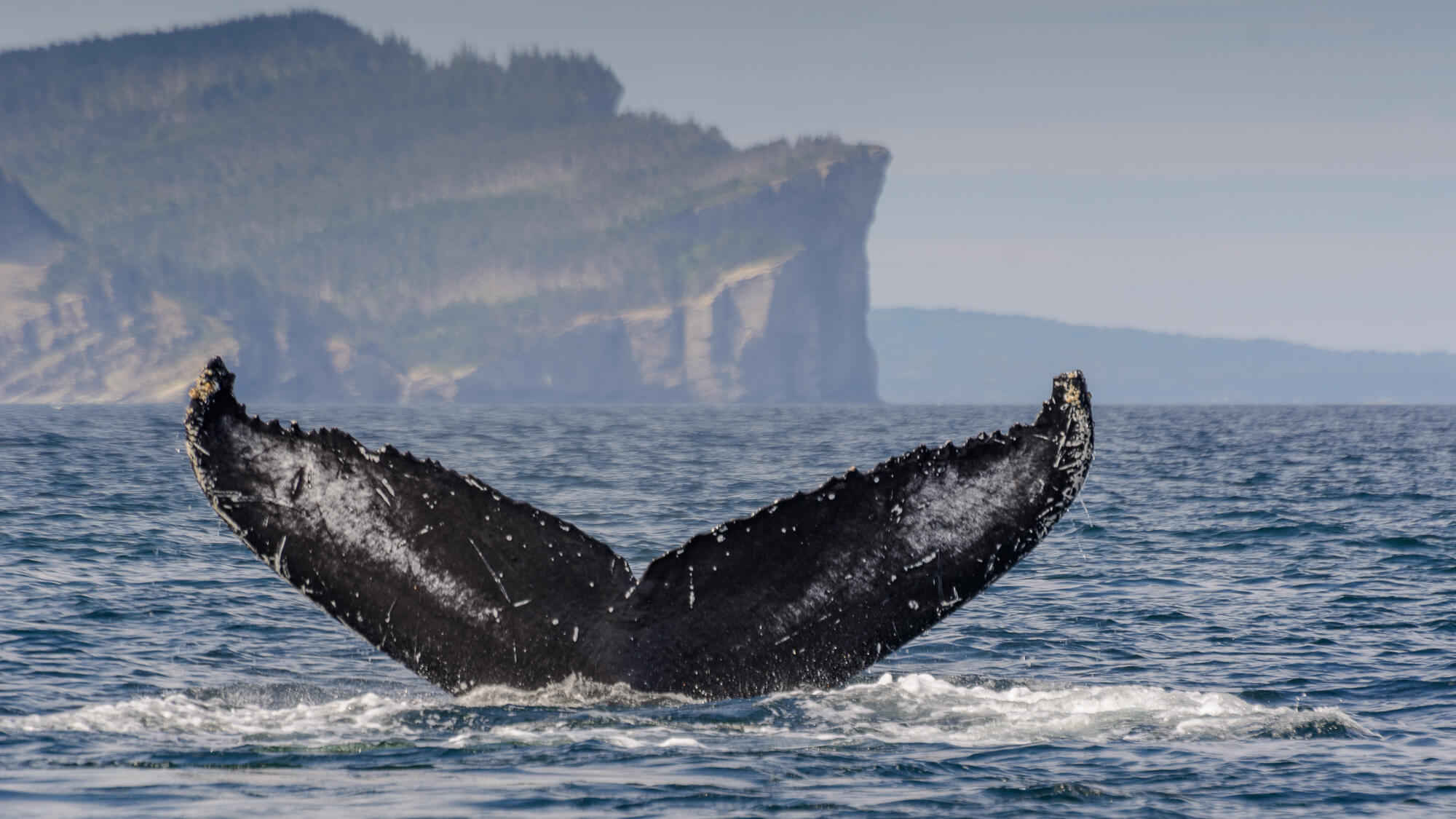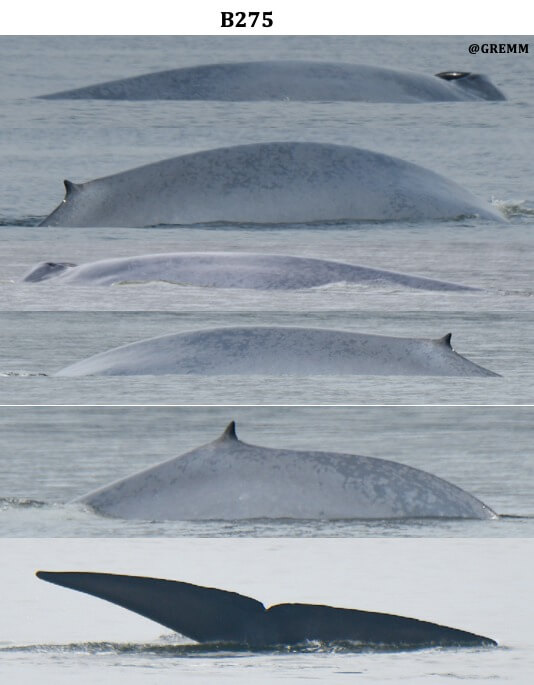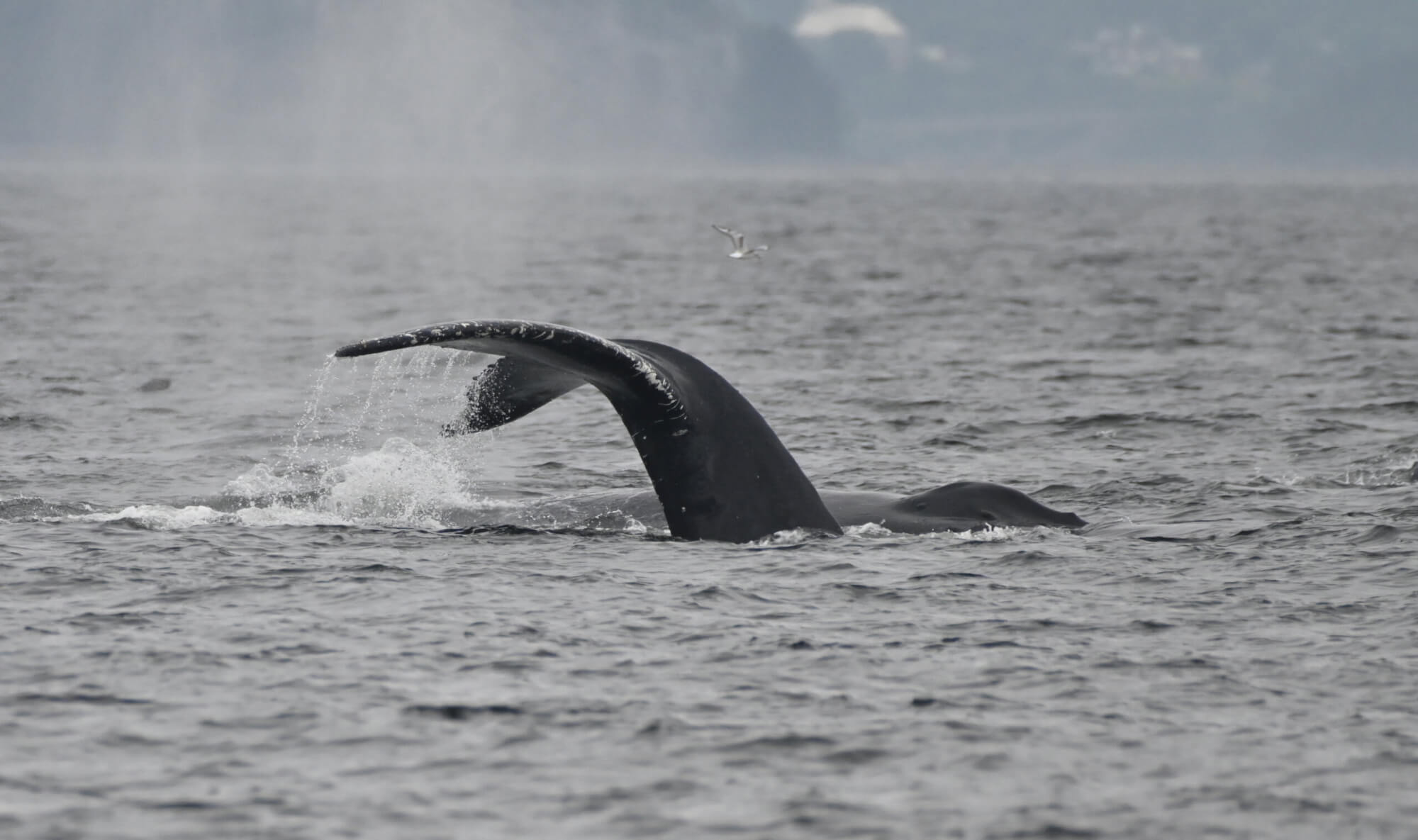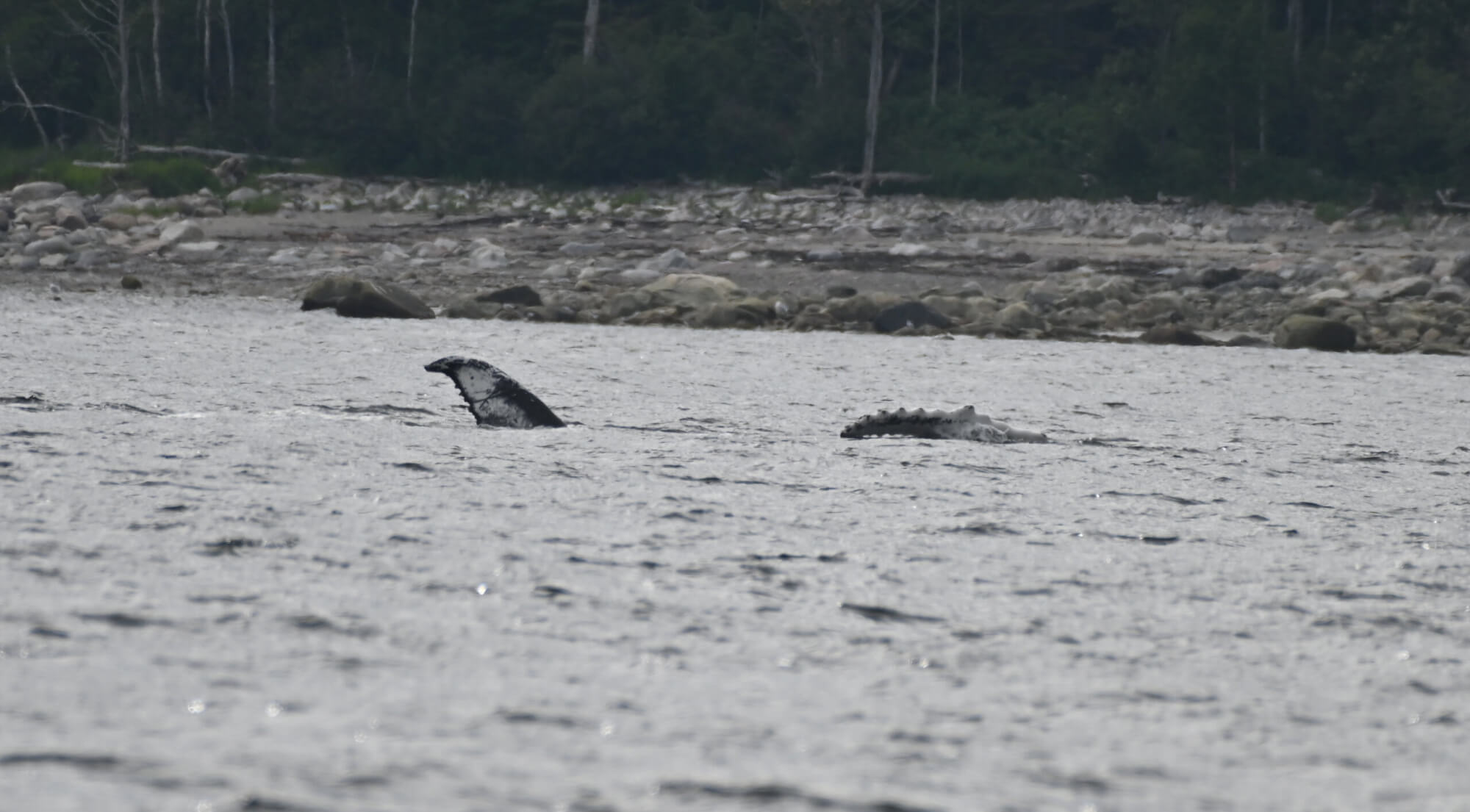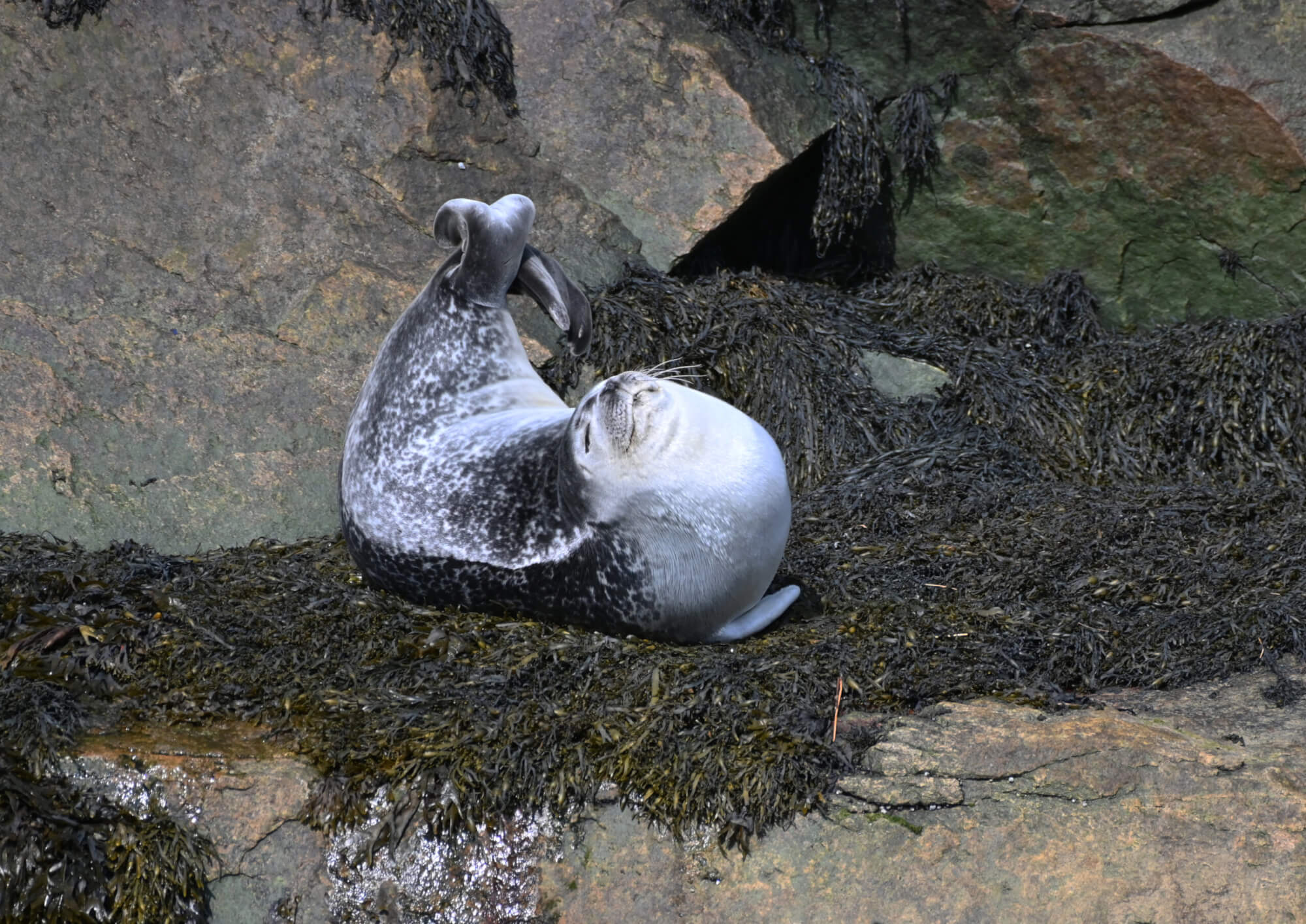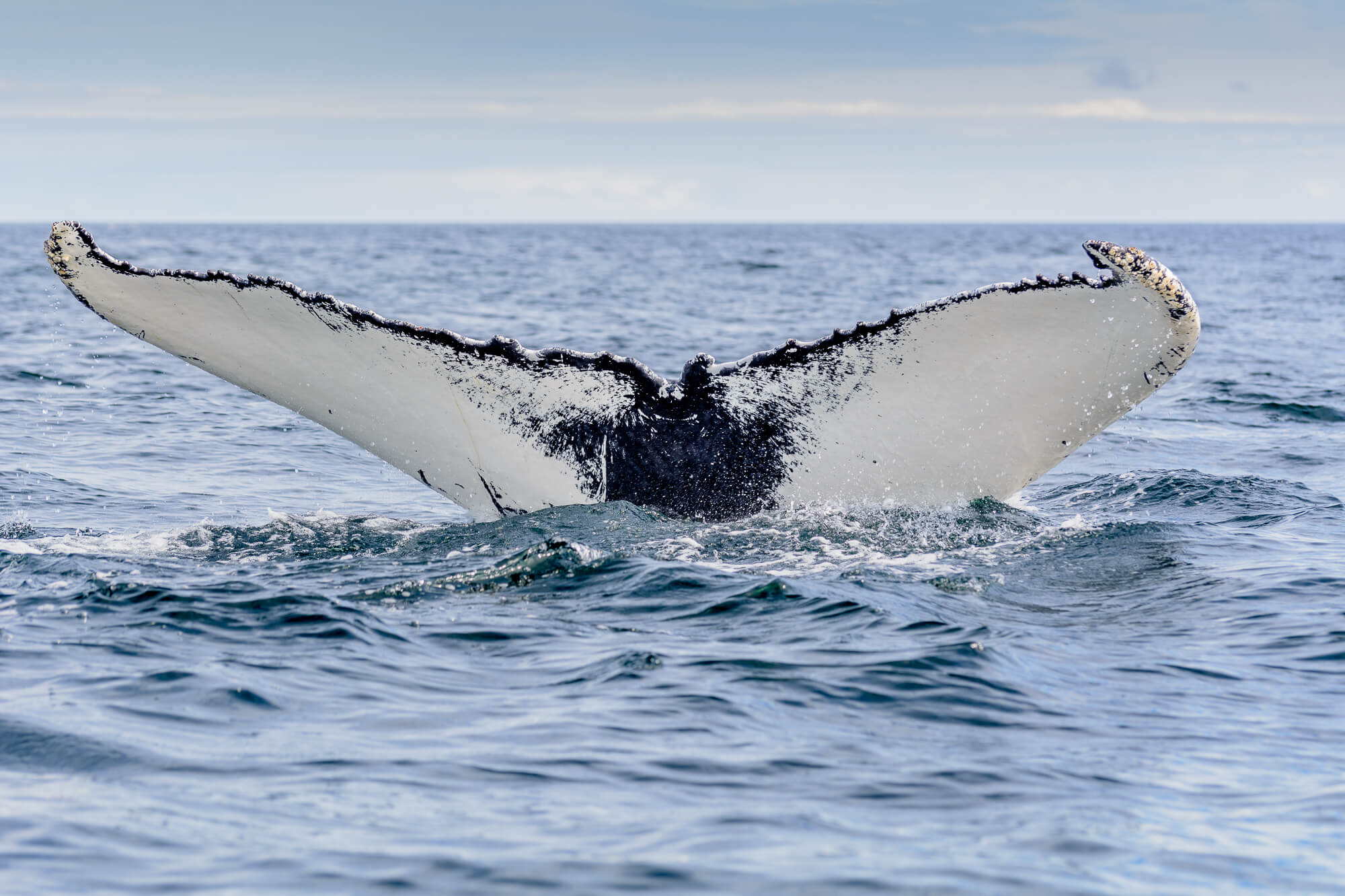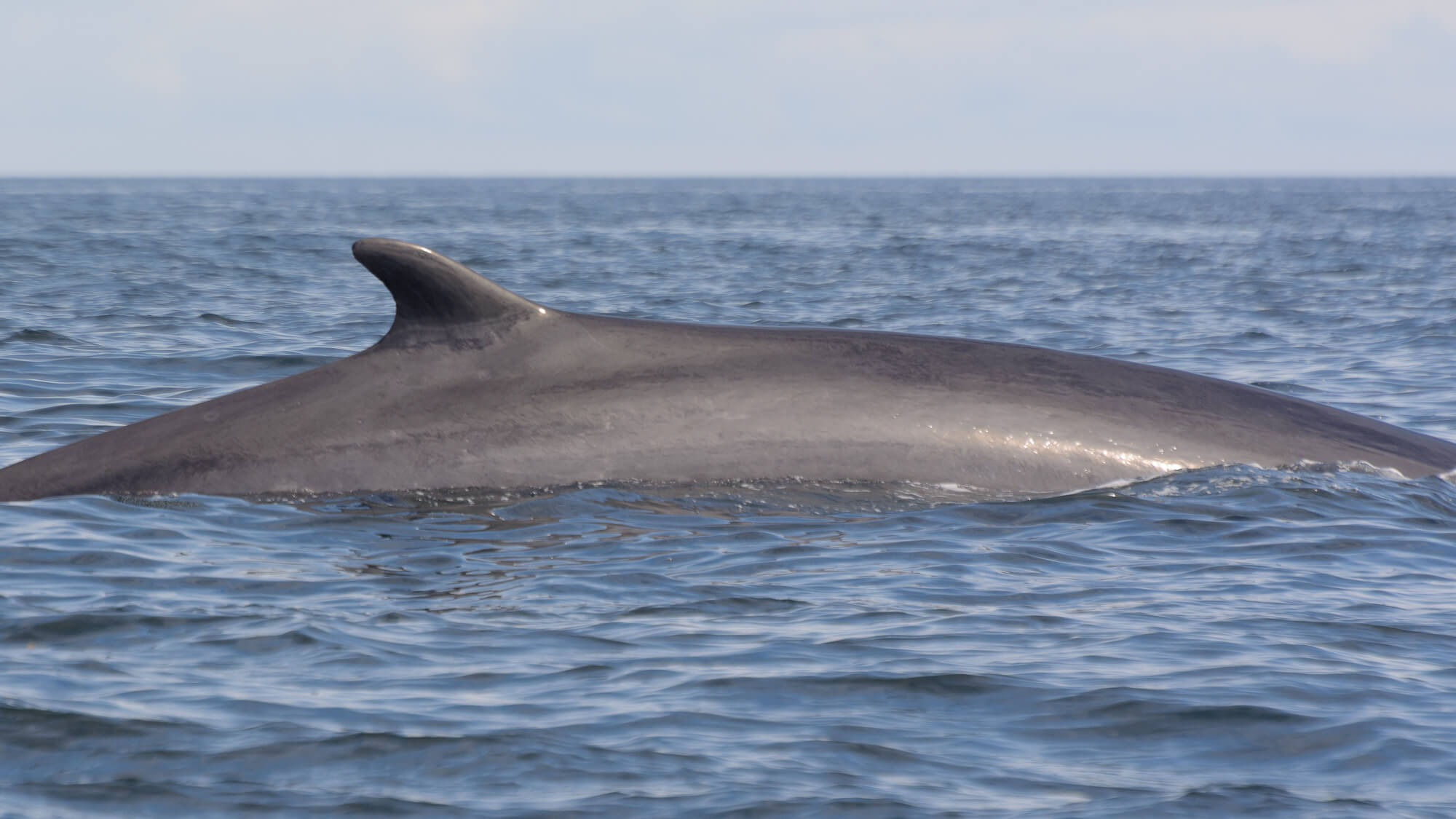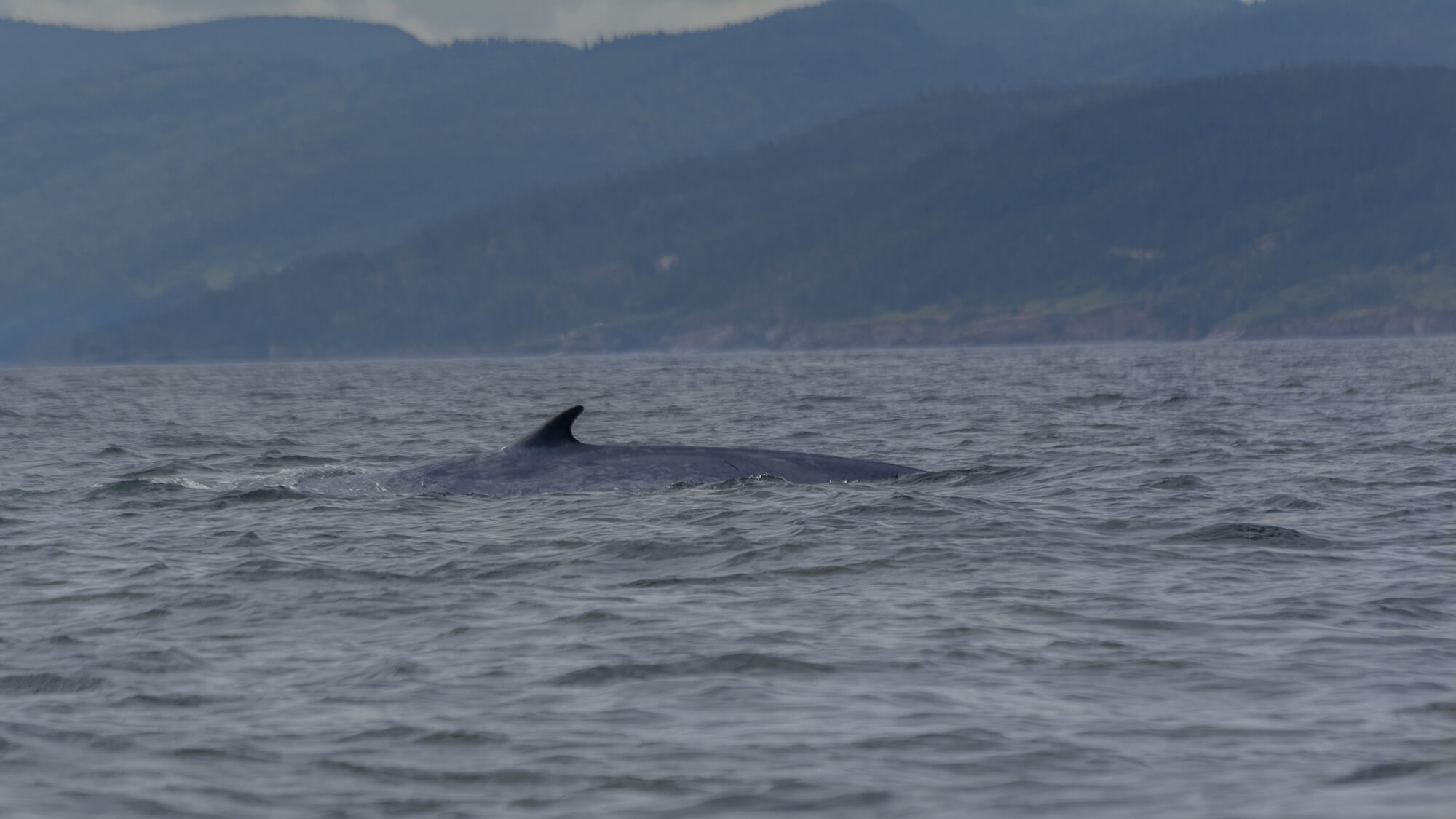Blue whales? Up to three individuals have reportedly been observed in the estuary. Humpbacks? Several in Gaspé Bay, including a group of five that even approached the coast. Right whales? Up to a dozen have been spotted in the gulf. The diversity of whales in the St. Lawrence has been impressive, and when it’s not a whale that’s being observed, it’s a shark!
Mysteries in the estuary
The narwhal may well have been seen for the first time this year! It was purportedly spotted from the shores of Les Escoumins, swimming quietly with a group of belugas heading up the river. Will we see him soon in Tadoussac? Undoubtedly, this is what the GREMM research team is hoping for in order to be able to confirm the presence of this cetacean first observed 2016 and always in the company of belugas.
In the Saguenay-St. Lawrence Marine Park, over a dozen humpback whales have been identified. Amongst them is H129, a.k.a. Whip, a rather unfamiliar individual in the estuary, but well known in the gulf. Two blue whales were also seen in the past week: Jaw-Breaker, a female that has been present for a few weeks already, and a newcomer, B260. The latter was apparently observed on several occasions “diving on its side,” which is quite a curious behaviour for such a large animal!
A few grey seals were lurking near the docks in Essipit. As one individual poked its nostrils above the water, one could actually hear it breathing from shore. “Perhaps it was sniffing the air for its next meal,” speculates one observer. Or else it had had a particularly exhausting day! In Tadoussac, a naturalist was able to admire a minke whale performing about ten frog jumps. Not to mention the presence of a fin whale, harbour porpoises, harbour seals and nearly a dozen minke whales in the area. In Les Bergeronnes, a marine mammal enthusiast ponders the identity of a whale she saw earlier: “Last Saturday, humpback whales were blowing left and right! And a mystery whale, too, wandering away from the rest of the group. A high spout and long exhalation, a dark back, and a dorsal fin like that of a blue whale, but still difficult to say for sure what species it was.”
Whales up and down the coast
In Pointe-des-Monts, the horizon is rather static, with just two minke whales and a few seals poking their heads above the water, but not a sign of a single large rorqual. Off the coast of Franquelin, harbour porpoises and grey seals were reported. One marine mammal enthusiast makes a remarkable observation: “Two minke whales were seen, one of which showed its pink abdomen on one occasion and on another, rolled over itself at the surface, showing its pectoral fin. The humpback whale H857 has also been in the area for a few days. All this marine life may be attributable to the presence of krill in the sector!
At the Mingan Island Cetacean Study (MICS), North Atlantic right whales are still present. Over the past week, between 12 and 15 individuals have been observed. MICS founder and director Richard Sears explains that typical mating behaviour was observed between some of the animals! Two fin whales were also spotted near Rivière-au-Tonnerre. Minke whales have been roaming the Mingan Islands, not to mention a few porpoises here and there. A humpback and a blue whale also made appearances, not to mention a visit by a basking shark!
Cetaceans in the bay
In Gaspé Bay, after a few unproductive days scanning the horizon, marine mammals seem to have all arrived at the same time! For starters, Atlantic white-sided dolphins were observed in good numbers, with tallies of between 100 and 150 animals! This gregarious species lives in groups of several individuals and feeds on small pelagic fish, squid and occasionally benthic crustaceans. Additionally, minke whales have been regularly swimming near the shore, while harbour porpoises are also being observed in the area. On the morning of August 17, a group of five humpbacks appeared in the bay, opposite L’Anse-aux-Amérindiens. And that’s not all: A basking shark was seen and even captured on video!
In Gaspé, MICS collaborator Guylaine Marchand shares her various encounters with marine mammals during a day on the water (August 15). “To my delight, I had the opportunity to observe a blue whale, two fin whales and five humpbacks, including H009 a.k.a. Fleuret. According to MICS archives, Fleuret is a female born in 1982 to the female H008, a.k.a. Pseudo. Fleuret has taught the MICS team a great deal about the biology and life cycle of humpback whales. For example, the fact that females of the species reach sexual maturity around 9 years of age and that they can give birth to calves every three to four years or so. Since then, Fleuret has become a regular visitor to the St. Lawrence, having been seen almost every year in various parts of the estuary and the gulf.”
Belugas in the Gaspé!
Two humpbacks and a handful of minke whales were spotted in Sainte-Anne-des-Monts. A group of about fifty belugas, mostly males, also wowed observers.
Where are the whales this week? Observation map
These data were reported by our network of observers. They give an idea of the presence of whales and in no way represent the actual distribution of whales in the St. Lawrence. Use it for fun!
Click on the whale or seal icons to discover the species, the number of individuals, additional information or photos of the sighting. To enlarge the map, click on the icon in the top right-hand corner. The map works well on Chrome and Firefox, but not so well on Safari.
To display the list of sightings, click on the icon in the top left-hand corner.


